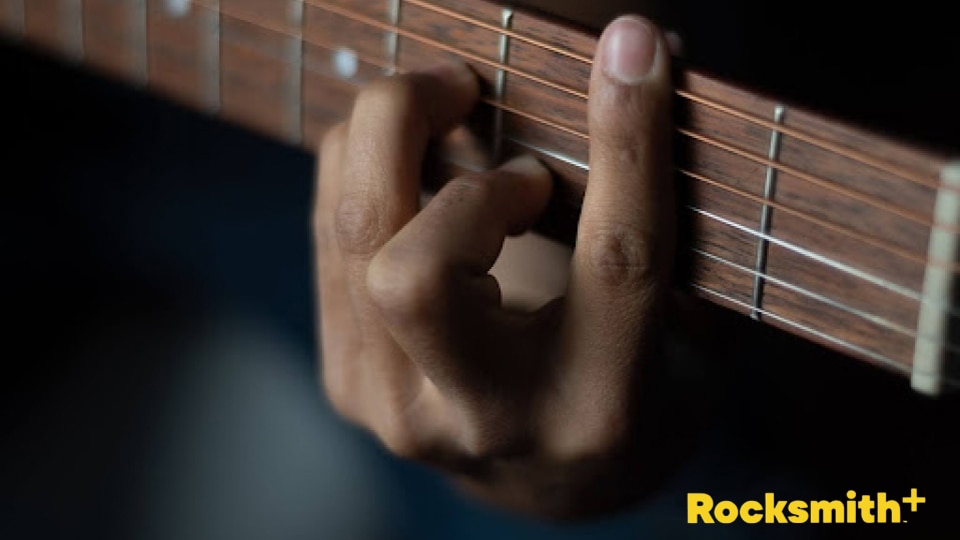Learning guitar, one of the most versatile instruments, allows you to experiment with different ways of voicing the same chord.
By mastering multiple positions and voicings for chords, players can not only navigate the fretboard with greater ease but also bring a richer texture to their music.
One such chord that's vital in many songs across genres is the F# major chord. In this article, we will delve into four unique ways to play this vibrant chord.
The Basics of the F# Chord
In the realm of music theory, the F# major chord is a triad consisting of three distinct notes: F#, A#, and C#. The combination of these notes gives the F# chord its distinct resonant sound.
Whether you're a beginner just starting out or an advanced player looking to add more flavors to your repertoire, understanding the fundamentals of the F# chord is the first step to mastering its various voicings on the guitar.
1. F# Simple 2nd Position
Open chords, often played in the first few frets of the guitar, offer a rich and resonant sound, making them a staple for guitarists of all levels. The F# open chord, though less common than some of its counterparts, can provide a bright tonality suitable for various musical contexts.
1. Place your index (1st) finger on the 2nd fret of the 1st (E) and 2nd (B) string
2. Place your middle (2nd) finger on the 3rd fret of the 3rd (G) string
3. Place your ring (3rd) finger on the 4th fret of the 4th (D) string
4. Low E (6th) and A (5th) string should be muted or not played.
Ensure that each finger presses firmly on its respective fret. Check each string individually to ensure it rings out clearly, making adjustments as necessary.
2. F# Barre Chord Using the E Shape
Barre chords are versatile, allowing guitarists to shift the same shape up and down the fretboard to achieve different chords. The E shape barre chord is rooted on the low E string and is derived from the open E major chord shape.
Start by identifying the F# note on the low E string, which is on the 2nd fret. Then, place your fingers as follows:
1. Place your index finger across all the strings on the 2nd fret — this is your “barre.”
2. Your ring finger goes on the 4th fret of the A string.
3. The pinky finger is right below it on the 4th fret of the D string.
4. Your middle finger is positioned on the 3rd fret of the G string.
Apply consistent pressure with your index finger across all the strings. It might be challenging at first, but with practice, your finger strength and positioning will improve.
If some strings are muted or buzzing, adjust the curvature and pressure of your barring finger. Ensure the thumb is placed comfortably at the back of the guitar neck for better leverage.
With patience and practice, you'll find the F# barre chord using the E shape to become a valuable tool in your chord arsenal.
3. F# Barre Chord Using the A Shape
A complementary method to the E shape is the A-shape barre chord, which uses the open A major chord as its foundation. Positioned with its root on the A string, this voicing offers a different tonal texture for the F# chord and can be easily shifted up and down the fretboard.
Begin by identifying the F# note on the A string located on the 4th fret. Place your fingers as follows:
1. Place your index finger across all strings on the 9th fret forming the basis for your barre chord
2. Your middle (2) finger presses down on the D (4th) string at the 11th fret.
3. Your ring (3) finger presses down on the G (3rd) string at the 11th fret.
4. Your pinky (4) finger presses down on the B (2nd) string at the 11th fret.
Begin your strum from the A string and play downward, ensuring the E string rings out clearly since it’s part of your barre.
When moving between the E shape and A shape barre chords, keep the wrist relaxed and fingers agile. Remembering the root note positions on the E and A strings will aid in faster chord changes.
4. F# With the 4th String as the Root
The F# chord with the 4th string as the root is another approachable guitar chord for guitarists at varying levels.
To play this version of the F# chord, follow these steps:.
1. Place your index (1) finger on the 4th fret of the D (4th) string
2. Your ring (3) finger presses down on the 6th fret of the G (3rd) and E (1st) string
3. Your pinky (4) finger presses down on the B (2nd) string at the 7th fret.
4. A (5th) and E (6th) string should be muted or not played.
Empowering Your Guitar Journey
In the vast landscape of guitar playing, having multiple voicings and approaches to a chord like F# not only enriches your sound but also prepares you for more intricate pieces and varied musical genres.
Incorporating technology can also be a game-changer in your learning process. Tools like Rocksmith+, a revolutionary guitar learning software, offer real-time feedback, expansive song libraries, and dynamic challenges tailored to your skill level.
Using Rocksmith+ while working to master new chords can help ensure a comprehensive and effective guitar learning journey.
Sources:
5 Hand Exercises To Help You Maintain Your Dexterity & Flexibility | USC Verdugo Hills Hospital
Common Chord Progressions and Feelings of Remembering | Sage Journals



